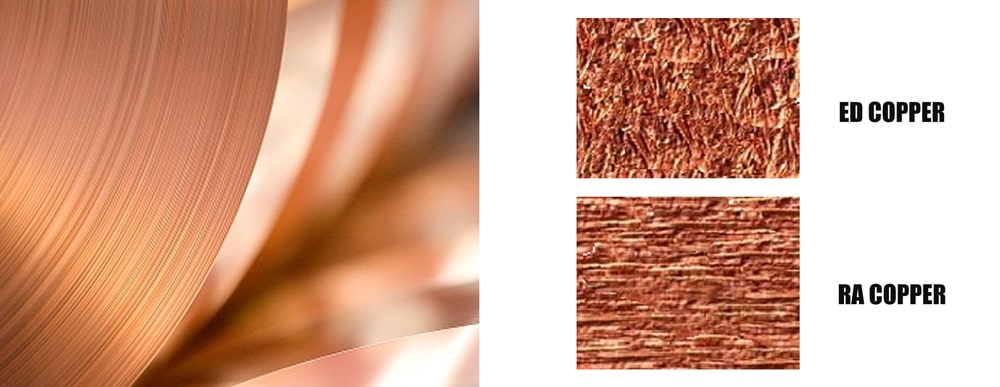Types of Copper Foil in PCB
Copper foil is one of the most critical materials in PCB structure. As a conductive layer flowing between components, copper foil determines the performance of PCB. There are four types of copper foil used in PCB according to the manufacturing process and application requirements:

1. Electrolytic copper foil (ED)
Electrolytic copper foil is made by electroplating process. Copper is deposited on a rotating drum to form copper foil with different surface characteristics on both sides. One side is smooth and the other side is slightly rough to enhance adhesion to the substrate. Electrolytic copper foil is widely used because of its cost-effectiveness and stability.
2. Rolled annealed copper foil (RA)
Rolled annealed copper foil is made by mechanical rolling and heating process to improve the flexibility and ductility of copper. This process can form a more uniform grain structure, resulting in better flexibility, which is ideal for flexible PCB and high-frequency circuits.
3. High temperature copper foil
High temperature copper foil is designed for high temperature circuits. It is suitable for use under extreme conditions.
4. Thin copper foil
Thin copper foil (less than 1 oz/sq. ft. thick) is used for high-density interconnect (HDI) PCBs that require fine traces and spaces.
Conclusion
Copper foil is an indispensable material in PCB manufacturing, and choosing the right copper foil type is critical to meeting the performance requirements of different applications. From highly flexible rolled annealed copper foil to highly conductive electrolytic copper foil, each copper foil type offers unique advantages for specific use cases.
Share This Story, Choose Your Platform!















